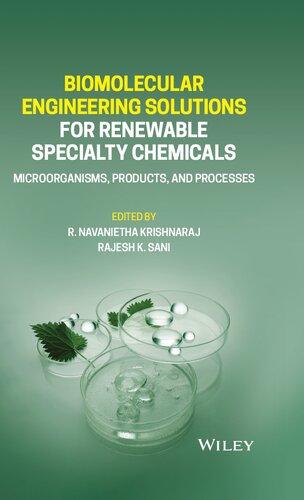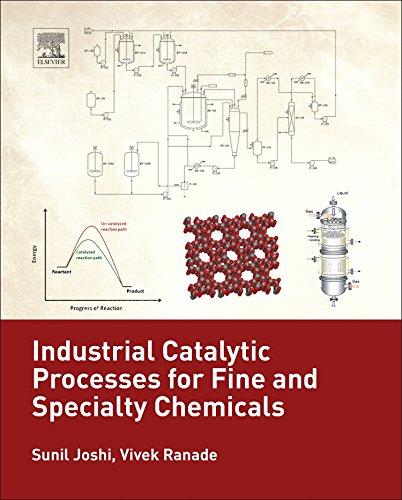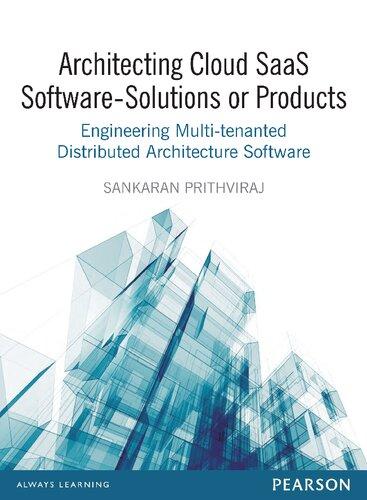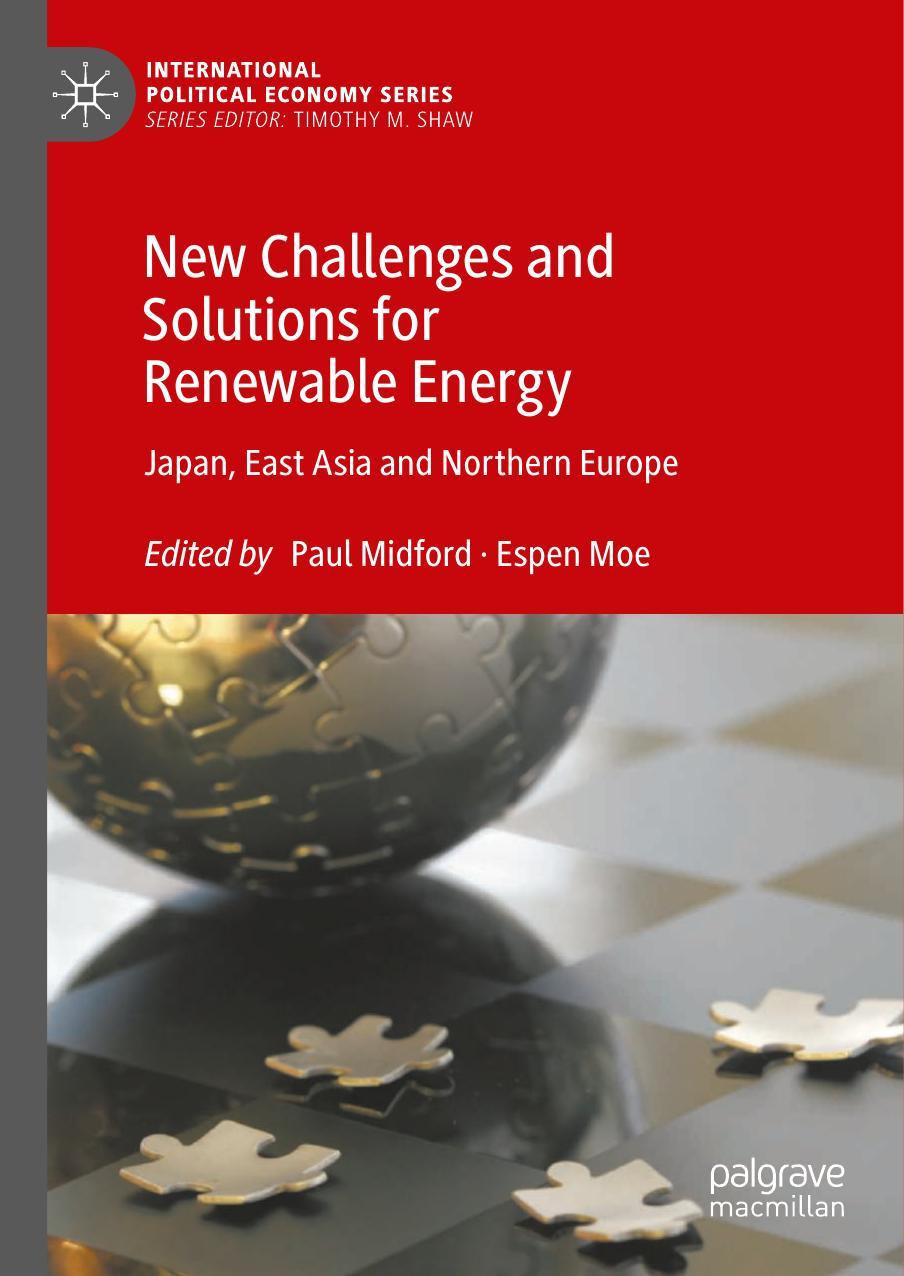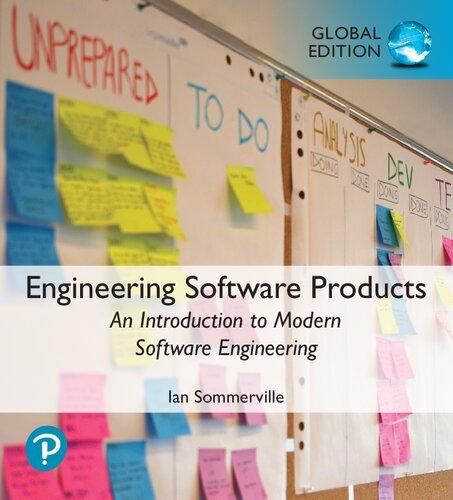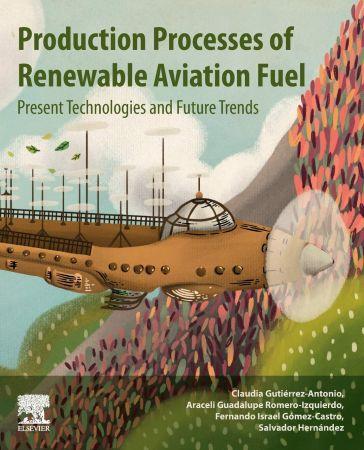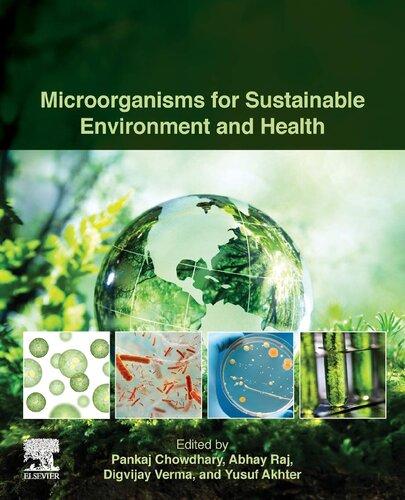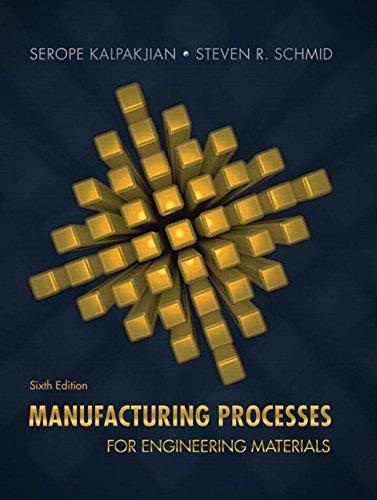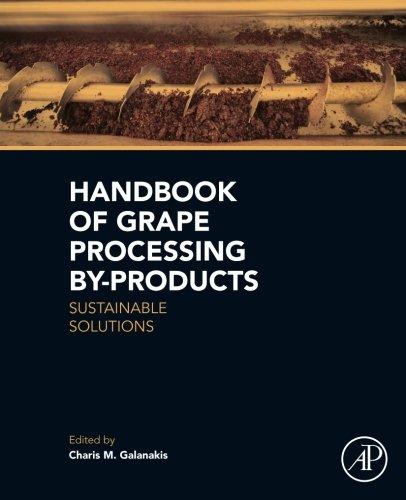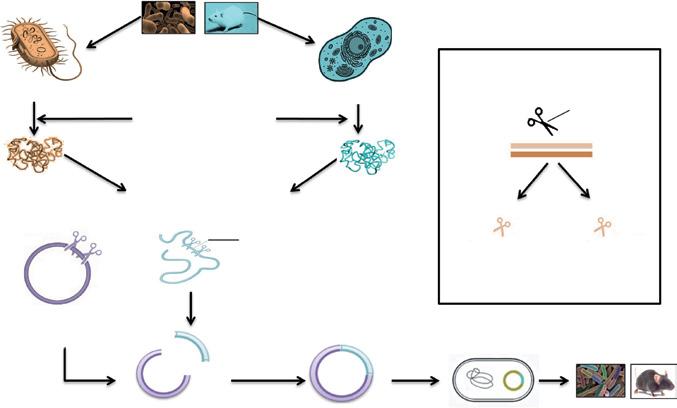Biomolecular Engineering Solutions for Renewable Specialty Chemicals
Microorganisms, Products, and Processes
Edited by
R. Navanietha Krishnaraj
South Dakota School of Mines and Technology
Rapid City, SD, USA
Rajesh K. Sani
South Dakota School of Mines and Technology
Rapid City, SD, USA
This edition first published 2022 © 2022 John Wiley and Sons, Inc.
All rights reserved. No part of this publication may be reproduced, stored in a retrieval system, or transmitted, in any form or by any means, electronic, mechanical, photocopying, recording or otherwise, except as permitted by law.Advice on how to obtain permission to reuse material from this titleis available at http://www.wiley.com/go/permissions.
The right of R. Navanietha Krishnaraj and Rajesh K. Sani to be identified as the authors of the editorial material in this work has been asserted in accordance with law.
Registered Office
John Wiley & Sons, Inc., 111 River Street, Hoboken, NJ 07030, USA
Editorial Office
111 River Street, Hoboken, NJ 07030, USA
For details of our global editorial offices, customer services, and more information about Wiley products visit us at www.wiley.com.
Wiley also publishes its books in a variety of electronic formats and by print-on-demand. Some content that appears in standard print versions of this book may not be available in other formats.
Limit
of Liability/Disclaimer of Warranty
In view of ongoing research, equipment modifications, changes in governmental regulations, and the constant flow of information relating to the use of experimental reagents, equipment, and devices, the reader is urged to review and evaluate the information provided in the package insert or instructions for each chemical, piece of equipment, reagent, or device for, among other things, any changes in the instructions or indication of usage and for added warnings and precautions. While the publisher and authors have used their best efforts in preparing this work, they make no representations or warranties with respect to the accuracy or completeness of the contents of this work and specifically disclaim all warranties, including without limitation any implied warranties of merchantability or fitness for a particular purpose. No warranty may be created or extended by sales representatives, written sales materials or promotional statements for this work. The fact that an organization, website, or product is referred to in this work as a citation and/or potential source of further information does not mean that the publisher and authors endorse the information or services the organization, website, or product may provide or recommendations it may make. This work is sold with the understanding that the publisher is not engaged in rendering professional services. The advice and strategies contained herein may not be suitable for your situation. You should consult with a specialist where appropriate. Further, readers should be aware that websites listed in this work may have changed or disappeared between when this work was written and when it is read. Neither the publisher nor authors shall be liable for any loss of profit or any other commercial damages, including but not limited to special, incidental, consequential, or other damages.
Library of Congress Cataloging-in-Publication Data applied for:
ISBN: 9781119771920
Cover design by Wiley
Cover image: © Vetre/Shutterstock
Set in 9.5/12.5pt STIXTwoText by Straive Pondicherry, India
Contents
Preface xvii
List of Contributors xix
1 Engineered Microorganisms for Production of Biocommodities 1 Akhil Rautela and Sanjay Kumar
1.1 Introduction 1
1.2 Fundamentals of Genetic Engineering 2
1.2.1 DNA-altering Enzymes 2
1.2.1.1 DNA Polymerases 4
1.2.1.2 Nucleases 4
1.2.1.3 Ligases 5
1.2.1.4 DNA-modifying Enzymes 6
1.2.2 Vectors 7
1.2.3 Incorporation of Modified DNA into Host 8
1.2.3.1 Introducing Recombinants into Prokaryotes 8
1.2.3.2 Introducing Recombinants into Eukaryotic Hosts 9
1.2.4 Selection of Transformants 10
1.2.4.1 Direct Selection 10
1.2.4.2 Identification of the Clone from a Gene Library 11
1.3 Beneficial Biocommodities Produced Through Engineered Microbial Factories 12
1.3.1 Biopolymers 13
1.3.1.1 Cellulose 14
1.3.1.2 Poly-ϒ-glutamic Acid 15
1.3.1.3 Hyaluronic Acid 16
1.3.1.4 Polyhydroxyalkoate 18
1.3.2 Organic Acids 20
1.3.2.1 Citric Acid 21
1.3.2.2 Lactic Acid 23
1.3.2.3 Succinic Acid 24
1.3.2.4 Fumaric Acid 26
1.3.3 Therapeutic Proteins 27
1.4 Photosynthetic Production of Biofuels 28
1.4.1 Biohydrogen 29
1.4.2 Biodiesel 30
1.4.3 Bioethanol 31
1.4.4 Terpenoids 32
1.5 Conclusion 34
References 34
2 Microbial Cell Factories for the Biosynthesis of Vanillin and Its Applications 49
Sukumaran Karthika, Manoj Kumar, Santhalingam Gayathri, Perumal Varalakshmi, and Balasubramaniem Ashokkumar
2.1 Introduction 49
2.2 Natural Sources of Vanilla and Its Production 51
2.3 Biotechnological Production of Vanillin 52
2.3.1 Enzymatic Synthesis of Vanillin 52
2.3.2 Microbial Biotransformation of Ferulic Acid to Vanillin 54
2.3.3 Agro-wastes as a Source for Biovanillin Production 58
2.4 Strain Development for Improved Production of Vanillin 60
2.4.1 Metabolic and Genetic Engineering 60
2.5 Bioactive Properties of Vanillin 63
2.5.1 Antimicrobial Activity 63
2.5.2 Antioxidant Activity 63
2.5.3 Anticancer Activity 64
2.5.3.1 Apoptosis Pathway 64
2.5.3.2 Tumor Necrosis Factor-induced Apoptosis 64
2.5.3.3 Cell Cycle Arrest 65
2.5.3.4 Nuclear Factor κB (NF-κB) Pathway 65
2.5.4 Anti-sickling Activity 65
2.5.5 Hypolipidemic Activity 66
2.6 Conclusion 66
Acknowledgments 66
References 67
3 Antimicrobials: Targets, Functions, and Resistance 77
Madhuri Dutta, Sinjini Patra, Shivam Saxena, and Anasuya Roychowdhury
3.1 Introduction 77
3.2 Classification of Antibiotics 77
3.2.1 Classification of Antibiotics Based on Mode of Action: Bactericidal and Bacteriostatic 78
3.2.2 Classification of Antibiotics Based on the Spectrum of Action: Broad- and Narrow-spectrum Antibiotics 79
3.3 Antibacterial Agents 79
3.3.1 Penicillins 79
3.3.1.1 Mechanism of Action 82
3.3.1.2 Clinical Implications 83
3.3.2 Cephalosporins 83
3.3.2.1 Mechanism of Action 83
3.3.2.2 Clinical Indications 85
3.3.3 Macrolides 85
3.3.3.1 Mechanism of Action 85
3.3.3.2 Clinical Indications 85
3.3.4 Fluoroquinolones 86
3.3.4.1 Mechanism of Action 86
3.3.4.2 Clinical Indication 86
3.3.5 Sulfonamides 87
3.3.5.1 Mechanism of Action 87
3.3.5.2 Clinical Indication 88
3.3.6 Tetracyclines 88
3.3.6.1 Mechanism of Action 88
3.3.6.2 Clinical Indication 88
3.3.7 Aminoglycosides 89
3.3.7.1 Mechanism of Action 89
3.3.7.2 Clinical Indication 89
3.4 Antifungal Agents 89
3.4.1 Polyenes 90
3.4.1.1 Mechanism of Action 90
3.4.1.2 Clinical Indication 90
3.4.2 Azoles 90
3.4.2.1 Mechanism of Action 90
3.4.2.2 Clinical Indication 93
3.4.3 Echinocandins 93
3.4.3.1 Mechanism of Action 94
3.4.3.2 Clinical Indication 94
3.4.4 Flucytosine 95
3.4.4.1 Mechanism of Action 95
3.4.4.2 Clinical Implication 95
3.5 Antiviral agents 95
3.6 Antiparasitic Agents 98
3.6.1 Antiprotozoan Agents 98
3.6.2 Antihelminthic Agents 101
3.6.3 Ectoparasiticides 101
3.7 Antimicrobial Resistance 101
3.7.1 Genetic Basis of AMR 102
3.7.2 Mechanistic Basis of Antimicrobial Resistance 102
3.8 Conclusion 103
Acknowledgment 104
References 104
4 Trends in Antimicrobial Therapy: Current Approaches and Future Prospects 111 Mohan Kumar Verma, Santhalingam Gayathri, Balasubramaniem Ashokkumar, and Perumal Varalakshmi
4.1 Introduction 111
4.2 Antibiotics: A Brief History 112
4.2.1 Classification of Antibiotics 113
4.2.2 Evolution of Antibiotics 113
4.2.3 Mechanism of Action of Antibiotics 113
4.3 AMR: A Global Burden 113
4.3.1 Global Scenario 114
4.3.2 Origin of SUPERBUGS and the “END of Antibiotics” 116
4.4 Antimicrobial Resistance and Virulence 117
4.4.1 Molecular Insights and Mechanism of AMR 117
4.4.2 Antibiotic Resistance in Bacteria 118
4.4.2.1 Horizontal Gene Transfer 118
4.4.2.2 Increased Mutation Rate 118
4.4.2.3 Antibiotic Inactivation 118
4.4.2.4 Alteration of the Antibiotic Targets 119
4.4.2.5 Changes in Cell Permeability and Efflux 119
4.4.2.6 The Major Facilitator Superfamily 119
4.4.2.7 The ATP-Binding Cassette Superfamily 119
4.4.2.8 The Multidrug and Toxic Compound Extrusion Family 120
4.4.2.9 The Resistance–Nodulation–Division (RND) Superfamily 120
4.4.2.10 The Small Multidrug-Resistance Family 120
4.4.3 Development of Antibiotic Resistance 120
4.4.4 Prioritization of Antibiotic Resistant Bacteria 120
4.4.5 Understanding Biofilm Resistance 122
4.5 Alternatives to Antibiotics 122
4.5.1 Peptide Antibiotics 122
4.5.1.1 Cationic Antimicrobial Peptides (CAMPs) 122
4.5.1.2 Marine Antimicrobial Peptides 123
4.5.2 Nano Drugs 124
4.5.3 Probiotics 125
4.5.4 Bacteriocins 126
4.5.5 Bdellovibrio 127
4.5.6 Bdellovibrio as Live Antimicrobial Agent 128
4.6 Antibiotics: Global Action Plan on Antimicrobial Resistance 129
4.7 Conclusion 130
Acknowledgment 130
References 131
5 Fermentation Strategies in the Food and Beverage Industry 141
Mohit Bibra, R. Navanietha Krishnaraj, and Rajesh K. Sani
5.1 Introduction 141
5.2 Current Trends in Food Fermentation 143
5.2.1 Fermentation Types 144
5.2.1.1 Spontaneous Fermentation 144
5.2.1.2 Back-Slopping Fermentation 144
5.2.1.3 Starter- Culture Fermentation 144
5.2.2 Microbial Cultures 145
5.2.2.1 Starter Cultures 145
5.2.2.2 Adjunct Cultures 155
5.2.2.3 Bio-protective Cultures 155
5.2.2.4 Probiotic Cultures 155
5.3 Future Directions 156
5.3.1 Use of Defined Mixed Cultures 156
5.3.2 Nanotechnology 157
5.3.2.1 Nanosensors 157
5.3.2.2 Nanoparticles 157
5.3.2.3 Nanocomposites 157
5.3.3 Meat Analogues 158
5.4 Conclusions 158
5.5 Questions for Thought 159 References 160
6 Bioactive Oligosaccharides: Production, Characterization, and Applications 165 R. Aanandhalakshmi, K. Sundar, and B. Vanavil
6.1 Introduction 165
6.2 Sources, Types, Structure of Oligosaccharides 166
6.2.1 Plant Source 166
6.2.2 Animal Source 167
6.2.3 Insect Source 167
6.2.4 Marine Source 167
6.2.5 Microbial Source 168
6.2.6 Synthetic Oligosaccharides 168
Contents x
6.2.7 Pseudo-oligosaccharides 168
6.3 Production Methods of Oligosaccharides 169
6.3.1 Chemical Methods 169
6.3.2 Physical Methods 169
6.3.3 Enzymatic Hydrolysis 171
6.3.4 Microbial Production of Oligosaccharides 171
6.4 Extraction, Separation, and Purification of Oligosaccharides 172
6.5 Characterization of Oligosaccharides 174
6.6 Functional Properties of Oligosaccharides 174
6.7 Applications of Oligosaccharides 175
6.7.1 Functional Foods, Nutraceuticals, and Prebiotics 176
6.7.2 Pharmaceutical and Medical Applications 176
6.7.2.1 Effects on Intestinal Microflora 176
6.7.2.2 Effects on Urogenital Infections 177
6.7.2.3 Type II Diabetes and Obesity 177
6.7.2.4 Immunomodulatory and Antitumor Activities 178
6.7.2.5 Effect on Cardiovascular Risk 178
6.7.2.6 Lowering of Cholesterol 178
6.7.2.7 Role in Osteoporosis 178
6.7.2.8 Antihypertensive Effects 179
6.7.2.9 Hepatic Protection 179
6.7.2.10 Antioxidant and Neuroprotective Agent 179
6.7.2.11 Antimicrobial Activity 180
6.7.2.12 Antibiotics 180
6.7.2.13 Oligosaccharides as Vaccine Components 181
6.7.3 Environmental Fortification 181
6.7.4 Cosmetics 182
6.7.5 Elicitors and Agriculture 182
6.7.6 Novel Biomaterials 183
6.8 Market Potential of Oligosaccharides 183
6.9 Future Prospects 184
References 184
7 Biopolymers: A Retrospective Analysis in the Facet of Biomedical Engineering 201
Gayathri Ravichandran and Aravind Kumar Rengan
7.1 Introduction 201
7.2 Natures’ Advanced Materials: A Glance at Its Structure and Properties 202
7.2.1 Polypeptides 202
7.2.1.1 Collagen 202
7.2.1.2 Elastin 202
7.2.1.3 Silk Fibroin 204
7.2.1.4 Gelatin 204
7.2.1.5 Albumin 205
7.2.1.6 Casein 205
7.2.2 Polysaccharides 205
7.2.2.1 Cellulose 205
7.2.2.2 Starch 206
7.2.2.3 Cyclodextrin 207
7.2.2.4 Hyaluronic Acid 207
7.2.2.5 Chitosan 208
7.2.2.6 K-carrageenan 208
7.2.2.7 Agarose 209
7.2.2.8 Alginate 209
7.2.3 Polynucleotides-based Biopolymers 210
7.3 Smart Biopolymers 211
7.3.1 Chemical-Responsive Biopolymers 211
7.3.1.1 pH-Sensitive Smart Biopolymers 211
7.3.1.2 Glucose-Responsive Biopolymers 212
7.3.2 Physically Responsive Biopolymers 212
7.3.2.1 Temperature-Sensitive Smart Biopolymers 212
7.3.2.2 Light-Responsive Smart Polymers 213
7.3.2.3 Electric-Responsive Smart Polymers 213
7.3.2.4 Magnetic-Responsive Smart Polymers 214
7.3.2.5 Redox-Responsive Biopolymer 215
7.3.3 Biochemical Stimuli-Responsive Biopolymers 215
7.3.3.1 Enzyme-Responsive Biopolymer 215
7.4 Fundamental Applications of Biopolymers in Biomedical Engineering 216
7.4.1 Biopolymers in Cancer Theranostics 216
7.4.1.1 Drug Delivery 217
7.4.1.2 Cancer Diagnosis and Molecular Imaging 218
7.4.2 Biopolymeric-based Biosensor 219
7.4.3 Wound Healing 222
7.4.4 Tissue Engineering and Regenerative Medicine 223
7.4.4.1 Biopolymers as Bioink for 3D Scaffolds 225
7.4.4.2 Corneal Regeneration 225
7.4.4.3 Neural Tissue Engineering 226
7.4.4.4 Bone Tissue Engineering 227
7.4.4.5 Cartilage Tissue Regeneration 227
7.4.5 Biopolymers for Biological Implants 229
7.4.6 Biopolymers in Other Applications 230
7.5 Processing Techniques for the Contrivance of Biopolymers 230
7.5.1 3D Bioprinting 230
7.5.2 4D Bioprinting 232
7.5.3 Electrospinning 233
7.6 Conclusion 234
Acknowledgments 234
References 234
8 Metabolic Engineering Strategies to Enhance Microbial Production of Biopolymers 247
Shailendra Singh Shera and Rathindra Mohan Banik
8.1 Introduction 247
8.2 Microbes as Cell Factories for the Production of Speciality Biochemicals 248
8.2.1 Bacteria as Cell Factories for the Production of Biopolymers 249
8.2.1.1 Polysaccharides 249
8.2.1.2 Polyesters 250
8.2.1.3 Polyamides 251
8.2.2 Fungus as Cell Factories for the Production of Biopolymers 252
8.2.2.1 Polysaccharides 253
8.2.2.2 Polyester 253
8.2.2.3 Polyamides 254
8.2.3 Microalgae as Cell Factories for the Production of Biopolymers 254
8.2.3.1 Polysaccharides from Microalgae 255
8.2.3.2 Polyester 255
8.2.3.3 Polyamides 256
8.3 Microbial Production Pathways for Various Types of Biopolymers 256
8.3.1 Polysaccharide Production Pathways in Bacteria 256
8.3.2 Mechanism of Fungal Polysaccharides Synthesis 260
8.3.3 Mechanism of Synthesis of Polyester in Bacteria 260
8.3.4 Mechanism of Synthesis of Polyamide in Bacteria 262
8.4 Tools and Technologies Available for Metabolic Engineering 262
8.4.1 Metabolic Pathway Reconstruction 263
8.4.2 Metabolic Flux Analysis 264
8.4.3 Metabolic Control Analysis 266
8.4.4 Omics Analysis 266
8.5 Dynamic Metabolic Flux Analysis and its Role in Metabolic Engineering 268
8.6 Production of Biopolymers from Metabolically Engineered Microbes 269
8.6.1 Metabolic Modification of Pathway for Synthesis of Polysaccharides 269
8.6.2 Levan 271
8.6.3 Metabolic Modification of Pathway for Synthesis of Polyester 271
8.6.4 Metabolic Modification of Pathway for Synthesis of Polyamides 272
8.6.5 Culture of Metabolically Engineered Microbes in Fermentation or Bioreactor for Production of Biopolymer 273
8.7 Recovery and Purification of Biopolymers from Fermentation Broth 275
8.7.1 Separation and Purification of Xanthan 275
8.7.2 Separation of Poly-l-lysine 277
8.8 Conclusion and Future Challenges 278
Acknowledgments 278
References 279
Web References 285
9 Bioplastics Production: What Have We Achieved? 287 Tanvi Govil, David R. Salem, and Rajesh K. Sani
9.1 Introduction 287
9.2 Current Trends 289
9.3 Different Types of Bioplastics 291
9.3.1 Bio-based Polyethylene (Bio-PE) 291
9.3.2 Bio-based PET 292
9.3.3 Polylactic Acid 293
9.3.4 Starch Blends 294
9.3.5 Polyhydroxyalkanoate 295
9.3.6 Polybutylene Succinate 298
9.3.7 Polybutylene Adipate Terephthalate 299
9.3.8 Polycaprolactone 299
9.3.9 Epoxies 300
9.3.10 Cellulose Acetate 300
9.4 Challenges Facing the Bioplastics Industry 301
9.5 Misconceptions and Negative Impacts 301
9.6 Take Home Message and Future Directions 302
9.7 Questions for Thought 303
Acknowledgments 304
Conflict of Interest 304 References 304
10 Conversion of Lignocellulosic Biomass to Ethanol: Recent Advances 311 Ramiya Baskaran, Vignesh Natarajan, Shereena Joy, and Chandraraj Krishnan
10.1 Introduction 311
10.2 LCB: Structure, Composition, and Recalcitrance 312
10.3 LCB to Ethanol: Bioprocess Strategies 313
10.4 Pretreatment of LCB 313
10.4.1 Physical Pretreatment 316
10.4.2 Physicochemical Pretreatment 319
10.4.2.1 Steam Explosion 320
10.4.2.2 Liquid Hot Water 320
10.4.2.3 Ammonia Fiber Explosion 321
10.4.3 Chemical Pretreatment 321
10.4.3.1 Dilute Acid Pretreatment (DAP) 322
10.4.3.2 Alkali Pretreatment 322
10.4.3.3 Organosolv 323
10.4.3.4 Ionic Liquid (IL) and Deep Eutectic Solvent (DES) 323
10.4.3.5 Supercritical Fluid Pretreatment 324
10.4.4 Biological Pretreatment 325
10.4.4.1 Bacterial Pretreatment 325
10.4.4.2 Fungal Pretreatment 325
10.4.4.3 Enzymatic Pretreatment 326
10.4.5 Optimization of Pretreatment Process 326
10.5 Enzymatic Hydrolysis 327
10.5.1 Cellulose Hydrolysis 327
10.5.2 Xylan Hydrolysis 328
10.5.3 Accessory Enzymes 328
10.5.4 Auxiliary Activity and Non-Hydrolytic Enzymes 330
10.5.5 Enzyme Cocktail for Biomass Hydrolysis 331
10.5.5.1 Cocktail Development 331
10.6 High Solids Loading Enzymatic Hydrolysis (HSLEH) 335
10.6.1 Enzyme Inhibitors and Detoxification 335
10.6.2 Cellulase Feedback Inhibition 336
10.6.3 Rheology 337
10.6.4 Reactors and Impellers 337
10.7 Fermentation 338
10.8 Genetic Engineering in LCB Bioconversion 343
10.9 Conclusions 344
Acknowledgments 344
References 344
11 Advancement in Biogas Technology for Sustainable Energy Production 359 Rouf Ahmad Dar, Saroj Bala, and Urmila Gupta Phutela
11.1 Introduction 359
11.2 Biogas Developments Worldwide 360
11.3 Biogas Development in India 363
11.4 Recent Issues in Biogas Production 365
11.5 Current Trends in Biogas Production 365
11.6 Advanced Anaerobic Digestion Methodologies 367
11.6.1 Anaerobic Membrane Reactor (AnMBRs) 368
11.6.2 Dry Anaerobic Digestion Technology (DADT) 368
11.6.3 Anaerobic Co-digestion Technology (AcoD) 369
11.7 Role of Biotechnology in Enhancing Biogas Production 370
11.8 Application of Nanotechnology in Biogas and Methane Production 371
11.9 Biogas Upgrading Technologies 372
11.10 Conclusion 372
References 378
12 Biofertilizers: A Sustainable Approach Towards Enhancing the Agricultural Productivity 387 Satya Sundar Mohanty
12.1 Introduction 387
12.2 Types of Biofertilizers 388
12.2.1 Nitrogen-Fixing Biofertilizer 389
12.2.1.1 Free-Living Nitrogen-Fixing Microorganisms 390
12.2.1.2 Photosynthetic Nitrogen-Fixing Microorganisms 390
12.2.2 Phosphorus Biofertilizer 391
12.2.2.1 Phosphate-solubilizing Bacteria (PSB) 392
12.2.2.2 Phosphate-mobilizing Microorganisms 394
12.2.3 Plant- Growth-promoting Biofertilizers 394
12.3 Effect on Bioremediation of Environmental Pollutants 396
12.4 Bioformulations and Its Types 398
12.5 Preparation of Biofertilizers 401
12.6 Various Modes of Biofertilizer Application 402
12.7 Challenges to Commercialization of Biofertilizers 403
12.8 Future Perspective 403 References 404
13 Biofertilizers from Food and Agricultural By-Products and Wastes 419 Veknesh Arumugam, Muhammad Heikal Ismail, and Winny Routray
13.1 Introduction 419
13.2 Biofertilizer 420
13.2.1 N2-fixing Biofertilizer 422
13.2.1.1 Free-living N2-fixing Biofertilizer 422
13.2.1.2 Symbiotic N2-Fixing Biofertilizer 424
13.2.2 Phosphate-solubilizing Biofertilizers 425
13.2.3 Phosphate-mobilizing Biofertilizer 425
13.2.4 Plant- Growth- promoting Biofertilizers 426
13.3 Agricultural Waste 426
13.3.1 Agro-industrial Wastes 428
13.4 Food Waste 430
13.5 Biofertilizer Production Using Fermentation Technology 432
13.5.1 Solid-State Fermentation (SSF) 433
13.5.2 Submerged Fermentation (SmF) 435
13.5.3 Production of N2-fixing Biofertilizer 438
13.5.3.1 Production of Rhizobium Biofertilizer 438
13.5.3.2 Production of Azotobacter Biofertilizer 438
13.5.3.3 Production of Azospirillum Biofertilizer 439
13.5.4 Production of Phosphate-solubilizing Biofertilizer 439
13.5.5 Production of Phosphate-mobilizing Biofertilizer 439
13.6 Biofertilizer for Organic Farming 440
13.7 Conclusion 441
Conflict of Interest 441
References 442
Index 449
Preface
Biocommodity Engineering
Microorganisms have been realized as promising sources for production of biocommodities such as biofuels, pharmaceuticals, organic acids, amino acids, vitamins, biopolymers, surfactants, detergents, and enzymes. They offer several advantages over the conventional chemical processes including mild operating conditions, stereospecificity of the products, environmentally benign nature, and ecofriendly. Translating the bioproducts from laboratory to the industry remains a bottleneck. Biocommodity and biomolecular engineering approaches help in overcoming these limitations, developing new products, and improving the processes.
Considering the importance of the field, this book is specifically focused on potential technologies that can help in commercializing the processes. The objective of the book is to provide advanced technologies in producing different products using improved microorganisms/enzymes. This book will also discuss on improving the microbes or enzymes using protein engineering, metabolic engineering, and systems biology approaches for converting the wastes to value‐added products.
Overall, this would be an ideal textbook for bioprocess, biorefinery, biomolecular, and biocommodity engineering courses for chemical, biochemical, and environmental engineering students. We have also included glossary and reasoning type questions at the end of each chapter. This book will also help the scientists to understand the advanced concepts in biomanufacturing. This book discusses the promising strategies that will help overcome the current limitations in the biochemical synthesis processes. The book will help the readers working in industry or research to know about the new ways for improving the efficiency of the biochemical synthesis processes.
The editors would like to thank all the authors for their valuable contribution and the Wiley editorial team for their support.
List of Contributors
R. Aanandhalakshmi
Department of Biotechnology
School of Bio and Chemical Engineering
Kalasalingam Academy of Research and Education
Krishnankoil, TN India
Veknesh Arumugam
Department of Chemical and Environmental Engineering
Faculty of Engineering
Universiti Putra Malaysia
Serdang, Malaysia
Balasubramaniem Ashokkumar
Department of Genetic Engineering
School of Biotechnology
Madurai Kamaraj University
Madurai, TN India
Saroj Bala
Department of Microbiology
Punjab Agricultural University
Ludhiana, PB
India
Rathindra Mohan Banik Bioprocess Technology Laboratory
School of Biochemical Engineering
Indian Institute of Technology (Banaras Hindu University) Varanasi, UP India
Ramiya Baskaran Department of Biotechnology
Indian Institute of Technology Madras Chennai, TN India
Mohit Bibra Zymergen Inc., Emeryville, CA USA
Rouf Ahmad Dar Department of Microbiology
Punjab Agricultural University Ludhiana, PB India
List of Contributors xx
Madhuri Dutta
Biochemistry and Cell Biology Laboratory School of Basic Sciences
Indian Institute of Technology
Bhubaneswar, OR India
Santhalingam Gayathri Department of Genetic Engineering School of Biotechnology
Madurai Kamaraj University
Madurai, TN India
Tanvi Govil Department of Chemical and Biological Engineering
South Dakota Mines
Rapid City, SD USA
Composite and Nanocomposite
Advanced Manufacturing –Biomaterials Center
Rapid City, SD USA
Muhammad Heikal Ismail Department of Chemical and Environmental Engineering Faculty of Engineering Universiti Putra Malaysia
Serdang, Malaysia
Shereena Joy Department of Biotechnology
Indian Institute of Technology Madras Chennai, TN India
Sukumaran Karthika Department of Genetic Engineering School of Biotechnology
Madurai Kamaraj University
Madurai, TN India
Chandraraj Krishnan Department of Biotechnology
Indian Institute of Technology Madras
Chennai, TN India
R. Navanietha Krishnaraj
South Dakota School of Mines and Technology Department of Chemical and Biological Engineering
Rapid City, SD USA
BuG ReMeDEE Consortium, South Dakota School of Mines and Technology
Rapid City, SD USA
Composite and Nanocomposite Advanced Manufacturing Centre –Biomaterials (CNAM/Bio)
Rapid City, SD USA
Manoj Kumar Department of Genetic Engineering School of Biotechnology
Madurai Kamaraj University
Madurai, TN India
Sanjay Kumar
School of Biochemical Engineering
IIT (BHU) Varanasi
Varanasi, UP
India
Satya Sundar Mohanty
Assistant Professor
Department of Biotechnology
School of Agriculture and Biosciences
Karunya Institute of Technology and Sciences
Coimbatore, TN
India
Vignesh Natarajan
Department of Biotechnology
Indian Institute of Technology Madras
Chennai, TN
India
Sinjini Patra
Biochemistry and Cell Biology Laboratory
School of Basic Sciences
Indian Institute of Technology
Bhubaneswar, OR
India
Urmila Gupta Phutela
Department of Microbiology
Punjab Agricultural University
Ludhiana, PB
India
Department of Renewable Energy Engineering
Punjab Agricultural University
Ludhiana, PB
India
List of Contributors
Akhil Rautela
School of Biochemical Engineering
IIT (BHU) Varanasi, Varanasi UP, India
Gayathri Ravichandran Department of Biomedical Engineering Indian Institute of Technology, Hyderabad
Kandi, Telangana India
Aravind Kumar Rengan Department of Biomedical Engineering Indian Institute of Technology, Hyderabad
Kandi, Telangana India
Winny Routray Department of Food Process Engineering
National Institute of Technology Rourkela, OR India
Anasuya Roychowdhury School of Basic Sciences Biochemistry and Cell Biology Laboratory
Indian Institute of Technology Bhubaneswar, OR India
David R. Salem Department of Chemical and Biological Engineering
South Dakota Mines
Rapid City, SD USA
List of Contributors
Composite and Nanocomposite
Advanced Manufacturing –Biomaterials Center
Rapid City, SD
USA
Department of Materials and Metallurgical Engineering
South Dakota Mines
Rapid City, SD USA
Rajesh K. Sani
South Dakota School of Mines and Technology
Department of Chemical and Biological Engineering
Rapid City, SD USA
South Dakota School of Mines and Technology
BuG ReMeDEE Consortium
Rapid City, SD USA
Composite and Nanocomposite
Advanced Manufacturing Centre –
Biomaterials (CNAM/Bio)
Rapid City, SD USA
South Dakota School of Mines and Technology
Department of Chemistry and Applied Biological Sciences
Rapid City, SD
USA
Shivam Saxena
Biochemistry and Cell Biology Laboratory
School of Basic Sciences
Indian Institute of Technology
Bhubaneswar, OR India
Shailendra Singh Shera Department of Biotechnology
Faculty of Engineering & Technology
Rama University
Kanpur, UP India
K. Sundar Department of Biotechnology
School of Bio and Chemical Engineering
Kalasalingam Academy of Research and Education
Krishnankoil, TN India
B. Vanavil
Department of Biotechnology School of Bio and Chemical Engineering
Kalasalingam Academy of Research and Education
Krishnankoil, TN India
Perumal Varalakshmi Department of Molecular Microbiology
School of Biotechnology
Madurai Kamaraj University
Madurai, TN India
Mohan Kumar Verma School of Biotechnology
Department of Molecular Microbiology
Madurai Kamaraj University
Madurai, TN India
1
Engineered Microorganisms for Production of Biocommodities
Akhil Rautela and Sanjay Kumar
School of Biochemical Engineering, IIT (BHU) Varanasi, Varanasi, UP, India
1.1 Introduction
As we are going toward becoming more developed, we tend to see our transition toward more sustainable resources and knowing and understanding the life form more. This leads to the use of the living system and engineer them to produce biocommodities such as fuels, polymers, hormones, therapeutic proteins and peptides, and neurotransmitters, which is termed as biocommodity engineering. It basically deals with the need of society. Biotechnology, genetic engineering, and biocommodity engineering can be combined to meet these needs. The foundation of biocommodity engineering lies in molecular biology, which is also the foundation of genetic engineering or recombinant DNA technology (rDT). Therefore, it can be said that these terms are interrelated to each other. The majority of the biocommodities consumed by humans were earlier isolated from plants and animals, posing the threat of activation of immune reactions in humans. So, the machinery of the synthesis of these biocommodities can be engineered in microorganisms.
Its main aim is to engineer microorganisms to get a high yield of the product, use cheap raw material as a substrate so that cost of the product can be minimized, easy downstream processing, increasing robustness of the microorganism, etc. All this can be achieved by genetically modifying the organisms using genetic toolkits. This chapter deals with the basics of genetic engineering, giving details about the enzymes used, transformation techniques, and how to select a transformant from nontransformants. Further sections compile the comprehensive data of the problems in the production of biopolymers, organic acids, and therapeutic proteins from conventional methods and development of mutant strains for the synthesis of these biocommodities. The last section of the chapter gives an insight about the biofuel production
Biomolecular Engineering Solutions for Renewable Specialty Chemicals: Microorganisms, Products, and Processes, First Edition. Edited by R. Navanietha Krishnaraj and Rajesh K. Sani. © 2022 John Wiley & Sons, Inc. Published 2022 by John Wiley & Sons, Inc.
1 Engineered Microorganisms for Production of Biocommodities
from photoautotrophic organisms such as cyanobacteria and microalgae, which utilizes sunlight and carbon dioxide as energy and carbon source, respectively.
1.2 Fundamentals of Genetic Engineering
The advent of genetic engineering, also called rDT, started in 1952 with the discovery of Hershey and Chase, stating DNA as the genetic material (Hershey and Chase, 1952). Cohen and Boyer in the early 1970s were the first to show that the genetic material of one organism can be easily expressed in the other. Genetic engineering (Figure 1.1), in general, is the process in which the DNA is extracted, modified, transformed into a host cell, and a new organism is formed. The DNA from the desired organism is extracted and purified. It is then cleaved using restriction enzymes to get the gene of interest from it. The DNA fragment is then ligated into a vector, which acts as a driving vehicle for the DNA molecule to the host cells. This chimeric DNA molecule is then transformed into the host cells, and selection procedure under suitable stress conditions takes place. Finally, after numerous generations, the organism growing in the stress conditions is said to be recombinant or genetically modified. Genetic engineering has emerged as a crucial step in the development of industrial bioprocesses.
Each and every organism has a different genetic (DNA) makeup, which in turn makes the whole organism different with respect to their carbohydrates, lipids, and proteins. This is due to the fact that DNA transcribes and translates to mRNA and proteins, respectively (central dogma). This makes DNA the choice for manipulation in genetic engineering as manipulating it leads to the generation of a whole new organism. This postulation gives rise to many other disciplines of genetic engineering like recombinant protein production, protein engineering, metabolic engineering, etc. Every organism being different makes it difficult to use proteins and other biomolecules of one organism to the other. This was the main reason why proteins/ enzymes from animals cannot be used by humans. Earlier, insulin was extracted from the pancreas of slaughtered pigs, posing a threat to human health. This leads to the discovery of the first recombinant product, Insulin, approved by the US Food and Drug Administration (FDA) in 1982 (Goeddel et al., 1979). Now synthetic insulin is easily being produced by yeast worldwide as Escherichia coli does not perform post-translational modifications required to form functional insulin. Similarly, genetic engineering is now used to produce several other biocommodities. Modifying DNA and getting it expressed inside the host organism requires several steps, as shown in Figure 1.1 and the number of enzymes. These enzymes are explained in further sections with other requirements for genetic engineering.
1.2.1 DNA-altering Enzymes
The basis of rDT is the manipulation of DNA molecules with the help of molecular biology tools and biocatalysts. The available purified enzymes that can
Bacterial cell
4. Restriction digestion of vector
1. Desired organism selection
2. Extraction of DNA
3. Restriction digestion of DNA
Gene of interest
Animal cell
Restriction digestion of DNA
Restriction enzyme
dsDNA
Smal CCC CCC GGG GGG
EcoRI G CTTAA G AATT C
Blunt ends Sticky ends
5. Joining of vector and gene of interest by DNA ligase
Basic steps of gene cloning.
6. Vector containing gene of interest
7. Inser tion of vector into host organism
8. Genetically engineered organism
Figure 1.1
1 Engineered Microorganisms for Production of Biocommodities
manipulate DNA molecules with specific changes can be categorized in four broad classes: (i) DNA polymerases, (ii) nucleases, (iii) DNA ligases, and (iv) endmodification enzymes.
1.2.1.1
DNA Polymerases
DNA polymerases is the key enzyme in DNA replication driving the synthesis of new DNA strand from the parent DNA or RNA strand acting as a template. DNA polymerases require an oligo nucleotide (primer) for the initiation of DNA strand synthesis. DNA polymerase-I (DNA-dependent DNA polymerase) is widely studied polymerase and has both polymerization and exonuclease activity that can help in synthesizing new strand as well as the degradation for proof reading or repair and primer removal. DNA polymerase I (or Pol I) takes part in the process of prokaryotic DNA replication. It was the first DNA polymerase discovered by Arthur Kornberg in 1956 (Lehman et al., 1958). Pol I has three different enzymatic activities: A 5′ →3′ DNA-dependent DNA polymerase activity, a 3′ →5′ exonuclease activity that helps in proofreading, and a 5′ → 3′ exonuclease activity mediating nick translation during DNA repair. Pol I having polymerase but lacking nuclease activity is called klenow fragments (Klenow and Henningsen, 1970; Jacobsen et al., 1974).
Taq DNA polymerase, a thermostable DNA polymerase isolated from Thermus aquaticus by Chien et al. (1976). It is frequently used in the polymerase chain reaction (PCR), to amplify small quantities of DNA. It has a functional 5′ → 3′ exonuclease domain at the N-terminal, and 3′–5′ exonuclease domain was changed so it is not functional. Optimum temperature for Taq pol activity is 75–80 °C, with a half-life of greater than 2 hours at 92.5 °C and minimum 9 minutes at 97.5 °C, and able to replicate a 1000 bp strand of DNA within 10 seconds at 72 °C.
1.2.1.2 Nucleases
Nucleases can cut or digest the DNA molecules either from one end or in middle by acting on phosphodiester bond, which forms the backbone of DNA (Nishino and Morikawa, 2002). Depending on the position of their digestion nucleases are of two types: exonucleases and endonucleases. Phosphodiester bonds present in the ends of the DNA are digested by exonucleases, removing nucleotides one at a time from either end. Whereas phosphodiester bonds present in the middle of the DNA strand are digested by endonucleases. Specificity of nucleases vary from source to source, Aspergillus oryzae’ s endonuclease only cleaves single strands, whereas deoxyribonuclease I (DNase I), extracted from cow pancreas, cuts single as well as double-stranded DNA molecules. DNase I not being sequence specific cuts DNA at random interior phosphodiester bond, leading to production of mononucleotides and very short oligonucleotides mixture. Some of the examples of
1.2 undamentaasof eneticEngineering 5
nucleases are (i) Mung Bean Nuclease (isolated from mung bean sprouts) – a single-strand-specific DNA and RNA endonuclease which can degrade single strand overhangs from the end of DNA and RNA to make blunt ends. (ii) Nuclease S1 (isolated from Aspergillus sp.) – S1 nuclease is a single-strand-specific endonuclease that hydrolyzes single-stranded RNA or DNA into 5′ mononucleotides. The enzyme will hydrolyze single-stranded extensions in duplex DNA such as loops and gaps. S1 Nuclease is stable at 65 °C (Balabanova et al., 2012). (iii) Exonuclease III (isolated from E. coli) – removes single nucleotides from 3′ termini of the duplex DNA. It is generally used to make a set of nested deletions of the terminal of linear DNA strand. (iv) BAL31 nuclease (isolated from Alteromonas espejiana) – it is a 3′-exonuclease and removes nucleotides from both 3′-terminus of the two strands of linear DNA. (v) RNase H – it is an endonuclease that specifically hydrolyzes the phosphodiester bonds of RNA, when the RNA is hybridized to DNA (RNA-DNA) (Cerritelli and Crouch, 2009). (vi) RNase P – the specificity of this enzyme is to cleave other RNA molecules at the junction of single-stranded and the 5′ end of double-stranded regions of RNA (Guerrier-Takada et al., 1983).
Restriction endonuclease (RE) enzymes recognize and cleave the specific phosphodiester bond present in the DNA molecule (Smith and Welcox, 1970). Restriction enzymes are broadly classified into Type-I, Type-II, and Type-III. For their functioning, they require specific temperature, ATP, and divalent magnesium ions. On digestion of the DNA molecule they can produce both blunt and sticky end. Type I REs interact with unmodified target site in dsDNA. They are bifunctional enzymes having methylase and endonuclease in a single protein molecule. They cleave DNA around 1000 bp away from the recognition site. For their function, both ATP and Mg2+ are required. Type II REs are highly specific and cleave within or very near to the recognition sequence due to this reason type II are used widely in genetic engineering. They do not require ATP for the restriction digestion, only Mg2+ is required. Type III REs cleave dsDNA at defined positions and need ATP, Mg2+. They cleave the DNA 24–26 bp away from the specific site.
1.2.1.3 Ligases
Ligases are considered to be molecular glue in rDT, used to join two DNA segments. It also has role in various aspects of molecular biology such as replication, recombination, and cloning. In the presence of ligase enzyme when two DNA fragments are mixed under a certain condition, base pairing between two fragments occur which results in sealing of two different DNA fragments to make a chimera (Pascal et al., 2004). It occurs due to covalent bonds formation between 2′-PO4 group and 3′ - OH group of adjustment strands.
1.2.1.3.1 Mechanism of Action The DNA ligation reaction has two main steps. First, the DNA ends collide with each other by chance and reside together for
1 Engineered Microorganisms for Production of Biocommodities
enough time for the ligase to join them. For sticky overhangs, there is an additional reason; lower temperature stabilizes the hydrogen bonding between the complementary nucleotides, which really helps to join easily. DNA ligase catalyzes the joining of the 3′ - OH to the 5′-phosphate via a two-step process. First, the AMP nucleotide, which is linked to a lysine residue in the enzyme’s active site, is shifted to the 5′-phosphate. Then the AMP-phosphate bond is attacked by the 3′ - OH, forming the covalent bond and discharging AMP. To allow the enzyme to conduct further reactions, the AMP in the enzyme’s active site must be restocked by ATP. The DNA ligase enzyme has optimal activity at 25 °C so the ligation reaction is carried out at a temperature range of 16–25 °C. Normally, 1 hour at 16 °C is best for ligation but since bringing the DNA ends together is the least efficient part of the reaction favoring this by lowering the temperature to 4 °C can give even more efficiency. Two types of ligases are there that are used in genetic engineering. E. coli ligases which is generally used to join two sticky or cohesive ends. It is mainly used to catalyze a phosphodiester bond between duplex DNA-containing cohesive ends. It will not efficiently ligate blunt-ended fragments as much as it efficient for sticky end ligation. NAD+ is required as a cofactor for the ligation reaction. T4 DNA ligase that is generally used for the ligation of blunt-ended DNA molecules. This enzyme can join blunt-ended termini as well as ends with cohesive overhangs (either 3′ or 5′ complementary overhangs). This enzyme will also function for the repair of single-stranded nicks in duplex DNA, RNA, or DNA/ RNA duplexes. ATP is required as a cofactor for the ligation reaction. All the reactions are generally carried out at 16 °C. Sometimes PEG (polyethylene glycol) can be added that helps in fusion and increases the frequency of collision between two DNA molecules.
1.2.1.4 DNA-modifying Enzymes
1.2.1.4.1 Alkaline Phosphatase Alkaline phosphatase prevents self-ligation of DNA molecule (vectors and gene of interest) in genetic engineering experiment by dephosphorylating phosphate group on 3′ end of the DNA molecule. It is extracted from E. coli or calf intestine. The enzymes catalyze the hydrolysis of monoesters in phosphoric acid which can moreover catalyze a trans-phosphorylation reaction with large concentrations of phosphate acceptors. It can be used to prevent self-ligation of vectors in the cloning experiments because alkaline phosphate-treated DNA fragments lack the 5′-phosphophate in the terminal, required for the actions of DNA ligases (Tamás et al., 2002).
1.2.1.4.2 T4 Poly Nucleotide Kinase Polynucleotide kinase enzyme is exact reverse of alkaline phosphatase. It adds phosphate group to on the 5′ end of the DNA molecule and is extracted from phage-infected E. coli. The reaction with polynucleotides can be made reversible, which consents the exchange of the
